Navigating Hamilton’s roads can sometimes be challenging due to ongoing construction, maintenance work, and emergency closures. These disruptions affect daily commutes, public transit routes, and travel plans, making it essential to stay updated.
In this article, we explore the latest road closures Hamilton, their impact, and how to plan alternative routes efficiently. With reliable information from official sources, commuters can avoid unexpected delays and reach their destinations on time.
Whether you drive, cycle, or use public transport, being aware of current road conditions helps ensure a smoother journey. Stay informed and travel smarter by checking real-time updates before heading out.
What Are the Current Road Closures in Hamilton?
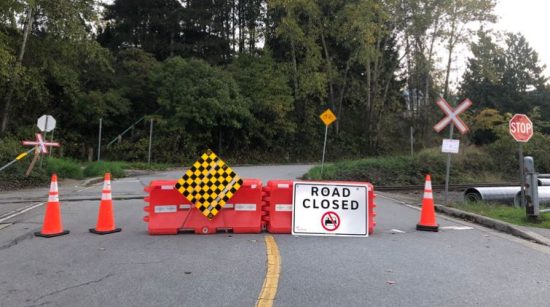
Hamilton experiences frequent road closures due to construction projects, utility work, and emergency repairs. As a fast-growing city, these closures are necessary to maintain infrastructure, improve road safety, and accommodate new developments.
Major Road Closures in Hamilton (2025 Updates)
As of 2025, several key roads are affected by temporary and long-term closures. These closures impact both residential neighbourhoods and major highways, causing delays for commuters and travellers.
Ongoing & Upcoming Closures:
- King Street & Dundas Street – Roadwork is underway as part of the downtown revitalization project. This closure is expected to last until mid-2025, affecting traffic between major intersections.
- Upper James Street – Lane restrictions are in place due to bridge maintenance, which is expected to take several months.
- Highway 403 Ramp Closures – Several night-time closures are in effect, particularly for westbound exits, to allow for necessary safety improvements.
- Rymal Road & Centennial Parkway – Water main replacement is causing major delays in this area, with expected completion in the second half of 2025.
- Downtown Hamilton Core – Several intersections are closed for upgrades, particularly focusing on making downtown more pedestrian-friendly.
Why Are Roads Closed in Hamilton?
Road closures in Hamilton occur for various reasons, each affecting traffic in different ways. While some closures are planned and scheduled, others happen unexpectedly due to emergencies or severe weather conditions.
Common Reasons for Road Closures
1. Scheduled Construction & Maintenance
- Road resurfacing & repaving – Many older roads undergo resurfacing to prevent potholes and improve driving conditions.
- Bridge and overpass repairs – Necessary maintenance on bridges, like those on Upper James Street, ensures safety and longevity.
- Utility work (gas, water, electricity) – Crews frequently close roads for underground work, like the water main replacement at Rymal Road & Centennial Parkway.
2. Emergency Repairs & Accidents
- Traffic collisions – Accidents, particularly on highways, can cause temporary or long-term closures.
- Storm damage & flooding – Low-lying areas in Hamilton experience flooding, leading to sudden road closures.
- Sinkholes & road deterioration – Weather-related wear and tear can result in sinkholes or other damage requiring immediate roadwork.
3. Special Events & Public Gatherings
- Parades, marathons, and cultural festivals – Hamilton hosts several large-scale events that require road closures.
- Sports events at Tim Hortons Field & FirstOntario Centre – Heavy traffic near stadiums often leads to temporary road restrictions.
To check upcoming closures due to events or maintenance, visit Hamilton’s Traffic Updates.
How Can You Stay Updated on Hamilton Road Closures?
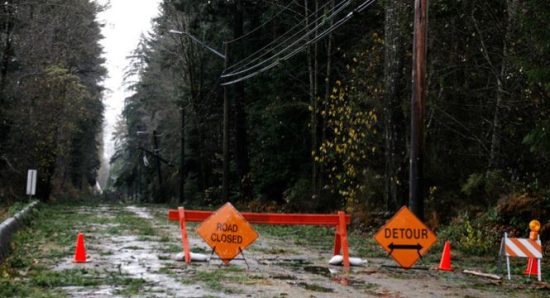
Being aware of road closures helps you plan ahead, avoid delays, and find alternative routes. Fortunately, Hamilton provides multiple resources to keep residents and travellers informed.
Best Ways to Stay Updated on Road Closures:
1. Official Government Sources
- Hamilton Open Data – Offers a real-time map of road closures, detours, and lane restrictions.
- South Lanarkshire Council – Provides updates on roadworks in Hamilton, Scotland.
2. Live Traffic & Navigation Apps
- Google Maps & Waze – Both apps provide real-time traffic reports and detour suggestions.
- The AA Traffic Planner – A useful tool for checking congestion levels and disruptions in Hamilton.
3. Social Media & News Alerts
- Follow @Hamilton_Traffic on Twitter/X for instant updates.
- Local news websites like CBC Hamilton & CHCH News report daily traffic updates.
Road Closures Hamilton – Which Areas Are Most Affected?
Certain parts of Hamilton experience more frequent closures due to their high traffic volume, ongoing development, and maintenance needs.
1. High-traffic zones with Frequent Closures
- Downtown Hamilton – Several long-term projects are in progress, including the King Street transformation and new pedestrian zones.
- Highway 403 & QEW Intersections – Exit ramps often close for repairs and safety improvements.
- Mohawk Road & Upper Wentworth – Road expansion projects affect traffic in these residential areas.
2. Neighborhoods with Regular Utility Work
- Stoney Creek & Ancaster – Water and gas line upgrades frequently cause temporary closures.
- East Hamilton – Ongoing storm drain and sewer improvements result in periodic disruptions.
For a full Hamilton road closure map, visit ArcGIS Open Data.
When Will the Roadworks in Hamilton Be Completed?
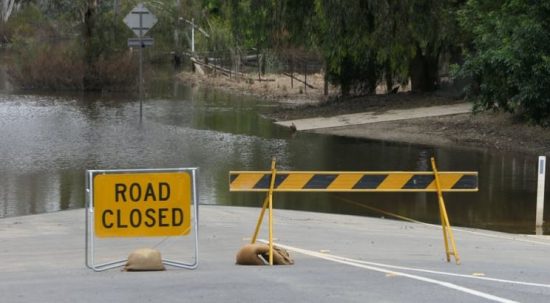
The timeline for roadwork completion varies based on the size and complexity of the project. Below are the estimated completion dates for some of Hamilton’s major roadwork projects:
| Roadwork Project | Expected Completion |
| King Street Revitalization | August 2025 |
| Highway 403 Ramp Upgrades | December 2025 |
| Downtown Pedestrian Zones | October 2025 |
| Rymal Road Expansion | Mid-2026 |
For up-to-date progress reports, visit Hamilton’s Project Tracker.
What Alternative Routes Can You Take During Road Closures?
When major roads are closed, knowing alternate routes can help you avoid delays and reach your destination faster.
Recommended Alternative Routes
- Red Hill Valley Parkway & Lincoln Alexander Parkway – Great for bypassing downtown congestion.
- Burlington Street & Industrial Drive – A good alternative to King Street for east-west travel.
- McMaster Route – Useful for westbound travellers looking to avoid Highway 403 closures.
To plan your detour routes, use The AA Route Planner.
How Do Road Closures Impact Daily Commuters in Hamilton?

Road closures significantly affect daily commuters in Hamilton, leading to delays, route changes, and increased travel times. Whether you drive to work, rely on public transit or cycle, these closures can disrupt your schedule.
Effects on Different Commuters
1. Drivers & Motorists
- Increased traffic congestion, especially during rush hours.
- Longer travel times due to detours and lane restrictions.
- Increased fuel costs due to stop-and-go traffic.
2. Public Transit Users
- Bus route diversions can cause delays and longer commutes.
- Some bus stops may be temporarily moved due to construction zones.
- Unexpected closures can lead to last-minute service changes.
3. Cyclists & Pedestrians
- Reduced access to bike lanes and sidewalks.
- Increased safety risks when crossing detour routes.
- Longer walking distances if pedestrian pathways are blocked.
Ways to Minimize Disruptions
- Check closure updates daily before leaving home.
- Use alternative routes suggested by navigation apps like Google Maps.
- Leave earlier than usual to account for potential delays.
- Use public transit updates to track service changes.
Staying informed is the best way to reduce the impact of road closures. Hamilton Open Data provides real-time commuter updates.
Who Manages and Approves Road Closures in Hamilton?
In Hamilton, road closures are planned, approved, and managed by multiple local authorities and organizations. Each entity plays a role in ensuring that roadworks, maintenance, and emergency closures are properly executed while minimizing disruptions.
Key Organizations Managing Road Closures
1. City of Hamilton Transportation Division
- Oversees major road maintenance projects.
- Approves lane restrictions and temporary road closures.
- Implements safety measures for drivers and pedestrians.
2. Hamilton Township & South Lanarkshire Council
- Handles local roadworks, construction permits, and detours.
- Coordinates with public transit services to adjust routes.
3. Emergency Services & Utility Companies
- Fire, police, and ambulance services may request emergency road closures.
- Water, gas, and electricity providers close roads for underground repairs.
4. Provincial & Federal Agencies
- Manage highways and expressway closures, including Highway 403.
How Closures Are Approved?
- Permits are issued after reviewing the impact on traffic.
- Closures are scheduled during off-peak hours when possible.
- Emergency closures require immediate approval from local authorities.
For detailed information, visit Hamilton’s traffic management page.
How Can You Report an Unplanned Road Closure in Hamilton?
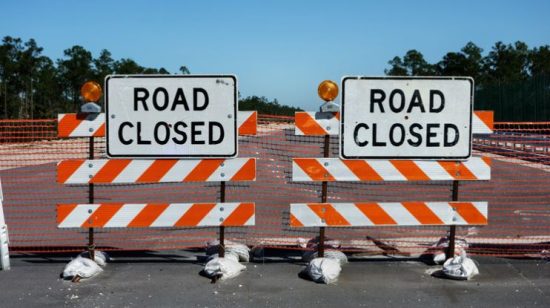
Unexpected road closures, such as those caused by accidents, flooding, or sinkholes, can create serious traffic issues. If you come across an unplanned closure, reporting it quickly can help authorities respond faster.
Where to Report an Unplanned Closure?
1. Hamilton City Services Hotline (311)
- Call 311 for non-emergency road reports.
- Provide details on location, type of obstruction, and possible hazards.
2. Police Non-Emergency Line: Call 905-546-4925 to report blocked roads due to crashes or weather damage.
3. Hamilton Township Online Report System: Submit complaints through the Hamilton Road Issue Reporting Portal.
4. Social Media & Traffic Apps: Report roadblocks on Waze, Google Maps, or Twitter/X traffic updates.
What Information Should You Provide?
- Exact location and nearest intersection.
- Type of issue (accident, flooding, construction delay).
- Photos (if safe to take).
Your report helps drivers avoid hazards and enables authorities to act quickly.
What Safety Measures Should Drivers Take During Road Closures?
Driving through or near road closures requires extra caution to prevent accidents and ensure smooth traffic flow. Whether dealing with construction zones or emergency roadblocks, following safety guidelines is essential.
Essential Safety Tips for Drivers
Obey Road Signs & Detour Directions
- Follow posted signs for alternative routes.
- Pay attention to lane closure warnings well in advance.
Reduce Speed in Construction Zones
- Speeding through work zones can lead to fines and accidents.
- Be cautious of uneven road surfaces or temporary barriers.
Stay Alert for Pedestrians & Cyclists
- Some detours may direct cyclists onto regular roads.
- Pedestrian crossings may be relocated during closures.
Avoid Sudden Lane Changes
- Merging abruptly can cause collisions in heavy traffic.
- Use turn signals and check blind spots before switching lanes.
Give Extra Space to Work Vehicles & Emergency Crews
- Roadwork crews may be present near closed roads.
- Emergency vehicles may require immediate right-of-way.
What to Do in Case of a Sudden Closure?
- Stay calm and follow detour signs.
- Use live traffic updates on Google Maps or Waze.
- Listen to local radio stations for emergency announcements.
For official safety regulations, visit Hamilton’s road safety page.
Where Can You Find Official Updates on Hamilton Road Closures?
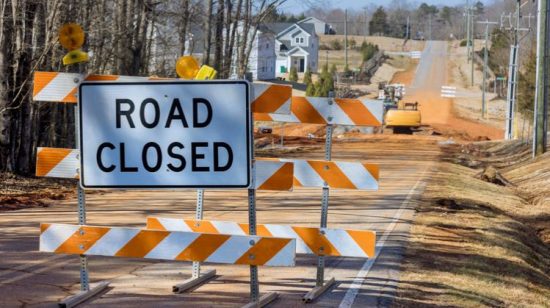
To stay informed about Hamilton’s latest road closures, use official city sources, navigation apps, and traffic websites.
Top Sources for Hamilton Road Closure Updates
1. City of Hamilton Road Closures Page
- Provides a full list of ongoing and upcoming closures.
- Includes maps and estimated completion dates.
2. Hamilton Open Data (GIS Road Closures)
- Real-time mapping tool showing road disruptions.
- Includes construction zones and lane restrictions.
3. South Lanarkshire Council Roadworks
- Covers road updates for Hamilton, Scotland and surrounding areas.
4. Traffic & Navigation Apps
- Google Maps & Waze – Provide live traffic reports.
- The AA Traffic News – Shows real-time road issues.
5. Local News & Social Media Alerts
- CBC Hamilton, CHCH News – Regularly post closure updates.
- Twitter/X Traffic Alerts – Follow @Hamilton_Traffic for live tweets.
By using these resources, you can avoid delays, plan efficient routes, and stay ahead of traffic disruptions.
Conclusion
Road closures in Hamilton are necessary for infrastructure improvements, safety enhancements, and special events. While they may cause temporary inconvenience, staying informed allows commuters to plan better and avoid unnecessary delays.
By using official resources, live traffic apps, and alternative routes, travellers can navigate the city more efficiently. Regular updates from government websites, navigation tools, and local news channels provide essential insights into ongoing disruptions.
Whether for daily commutes or occasional travel, proactive planning ensures a hassle-free experience. Always check for real-time road updates before travelling to make your journey smoother and more efficient.
FAQs
How often are road closures updated in Hamilton?
Road closures are updated regularly on official city websites and traffic apps, usually daily or as soon as changes occur.
Can I get real-time alerts for Hamilton road closures?
Yes, you can sign up for notifications on navigation apps like Google Maps and Waze or follow city traffic updates on social media.
What should I do if I encounter an unexpected road closure?
Follow detour signs, use a navigation app for alternate routes, and check official sources for estimated reopening times.
Are there specific seasons when road closures are more frequent?
Yes, closures are more common in summer and early fall due to construction, while winter may have closures due to snow and ice.
How do road closures impact public transit in Hamilton?
Bus routes may be diverted, stops relocated, or schedules adjusted; check Hamilton’s transit website for the latest updates.
Who decides which roads are closed for maintenance?
The City of Hamilton, in coordination with local authorities and utility companies, plans and approves all scheduled road closures.
Are emergency road closures announced in advance?
Emergency closures cannot be predicted but are reported immediately through official city channels and local news outlets.










